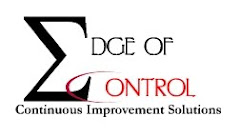All projects change – may be not quite a truism but close enough! Life happens and it WILL have an effect on your project.
Upfront planning can help develop contingency planning and well as conducting an FMEA (Failure Modes Effects Analysis) to anticipate some events (i.e. Customs officers holding up equipment at the border). Mother Nature though has been known to be unpredictable, delaying shipments, changing costs and even damaging equipment. Imagine those companies in flooded Queensland, Australia who have literally seen their plants go down the river!
Once a project has been initiated, a huge challenge for any project team is sticking to the original scope. While the previous examples have been more of an emergency, once the projects begins, many more people become involved and start wanting things added or changed. These changes to the project are termed “scope creep”.
During the planning phase, a stakeholder analysis can help identify those people who may want to see a slightly different outcome or who will place a higher priority on different aspects of the project. This again allows the team to develop a contingency strategy. Even more important at this time is to develop a scope change strategy.
A scope change strategy can be broken into 3 parts:
- Approvals – who needs to agree to the change in order for it to go ahead
- Criteria – what conditions have to be met to accept the change (ie safety, cost, quality)
- Impact – analysis of the impact it will have on the 3 success criteria; cost, performance and timeline
Communicating the strategy to team members and stakeholders will help reduce tension and ensure a fair process is being used, making things overall go smoothly.





No comments:
Post a Comment